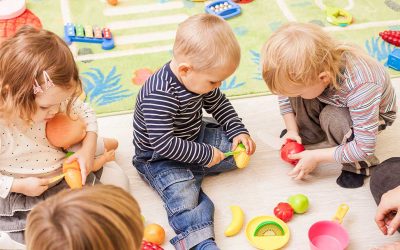We all know that swimming lessons are important. But as kids get older and schedules get busy, are our little ones quitting lessons too early? How long should children take swimming lessons?
Ask any parent and swimming lessons are usually the first activity that kids undertake. From as early as 12 weeks old, babies can head into the pool to begin the very important process of learning to swim. But as kids get older and they start to pick up other extra-curricular activities, many parents wonder how long their kids need to take lessons for.
While this is completely dependent on the individual child and their development and confidence in the water, there is one crucial factor to keep in mind – safety.
The 2018/19 summer proved catastrophic for drownings in Australia and compared to the previous year, there was a 60+ per cent increase in fatal drownings.
Furthermore, a 2018 report by The Royal Life Saving Society Australia found that three out of four children had quit swimming classes by age eight – long before they’d learned skills that could save their lives.
While starting swim lessons early is proven to assist with children’s physical and cognitive development, it’s important to remember the skills learnt at an early age must be maintained. Even stopping lessons during the winter months typically results in a decline in a child’s confidence and independence in the water, as well as a drop in technique and stamina.
Terri-Anne Ransfield, Centre Manager for Kingswim Lutwhyche says that even if children aren’t interested in competitive swimming, learning proper strokes and becoming a strong swimmer is vital.
“Repetition is key to mastering and maintaining these lifesaving skills,” Terri-Anne says.
Studies have shown that parents often overestimate their children’s swimming and safety abilities, with only 2 per cent of children aged 12 still doing swimming lessons.
“While children may seem competent from an early age, a discontinuation of swimming lessons can result in children losing their feel for the water both physically and psychologically,” says Terri-Anne. “What’s worrying is older children, who are less likely to be in regular lessons, are usually taking part in water activities like snorkelling or surfing, often unsupervised. It’s crucial they have the ability to keep themselves safe.”
The Royal Lifesaving Report also found:
• Only 25 per cent of children stayed in lessons long enough to reach national safety and swimming benchmarks at age nine and 10.
• 83 per cent of 12-year-old children couldn’t tread water for two minutes (the goal for children by the time they finish primary school).
• 40 per cent couldn’t swim 50 metres of freestyle or backstroke.
• One third of children couldn’t swim 25 metres of survival strokes.
“Learning to swim is much more than an extracurricular activity, says Terri-Anne. “It’s a necessity for children of all ages.”
The Australian Water Safety Council’s aim is for 100 per cent of children being able to achieve all their swimming and survival skills list before leaving primary school.
Swimming and survival skills
- Entry and exit: A fall in entry and exit from deep water
- Sculling and body orientation: Body awareness skills
- Movement and swimming strokes: Swim continuously: 50 metres of strokes with recognised stroke technique must be used
- Survival and lifejacket skills: Swimming, sculling, floating in cloths for 3 minutes and learning to float with a flotation device and life jacket.
- Underwater skills: Searching and swimming underwater
- Rescue skills: Throwing rescues
- Water safety knowledge: Knowledge of the dangers in the aquatic environment
- Extension skills: Competitive stroke development
“Although it is logistically challenging to get the kids to the pool as they get older, swimming isn’t just another sporting pursuit, it’s a matter of life and death,” says Terri-Anne.
“Living in Australia where 85 per cent of the population live with 50km of the coast, it’s essential we teach our kids to swim to a high level, at the minimum meeting the Australian Water Safety Council’s benchmarks.”
Terri-Anne suggests all swimmers should be competent in all four of the competitive strokes: freestyle, backstroke, breaststroke and butterfly.
“They should also have the ability to swim at least 400 metres freestyle non-stop, using the correct breathing and technique, and illustrate competence in the key safety skills,” Terri-Anne says.
If a child is competent in the pool and is becoming bored with swimming lessons, Terri-Anne suggests creating more water options to keep them interested and build on their water knowledge. “Sports such as kayaking, canoeing, surfing, scuba diving and yachting become accessible options and great activities for the family to do together.”
WATER SAFETY AT HOME
Never leave a child unsupervised around water
Shut the gate (secure pool fencing is vital)
Learn how to swim
Learn CPR
Don’t swim alone
For more swimming tips, try Why swimming is the most important activity for kids and Why swim safety matters for every family.




